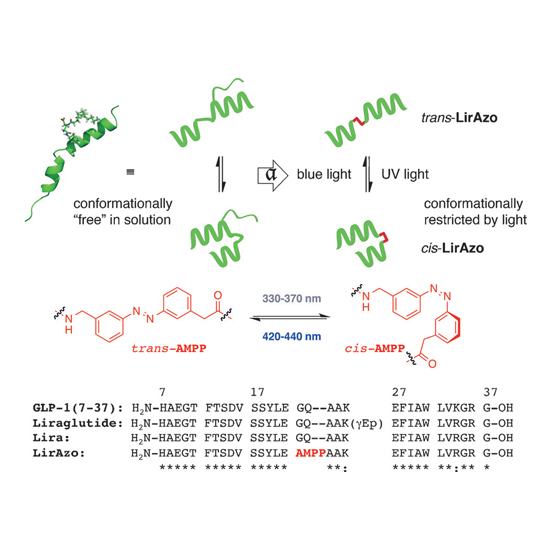Optical Control of Insulin Secretion Using an Incretin Switch
14-Dec-2015
Angew. Chem. Int. Ed. 2015, 54, 15565 –15569, DOI: 10.1002/anie.201506384
Angew. Chem. Int. Ed., online article
Incretin mimetics are set to become a mainstay of type 2 diabetes treatment. By acting on the pancreas and brain, they potentiate insulin secretion and induce weight loss to preserve normoglycemia. Despite this, incretin therapy has been associated with off‐target effects, including nausea and gastrointestinal disturbance. A novel photoswitchable incretin mimetic based upon the specific glucagon‐like peptide‐1 receptor (GLP‐1R) agonist liraglutide was designed, synthesized, and tested. This peptidic compound, termed LirAzo, possesses an azobenzene photoresponsive element, affording isomer‐biased GLP‐1R signaling as a result of differential activation of second messenger pathways in response to light. While the trans isomer primarily engages calcium influx, the cis isomer favors cAMP generation. LirAzo thus allows optical control of insulin secretion and cell survival.











